Featured in
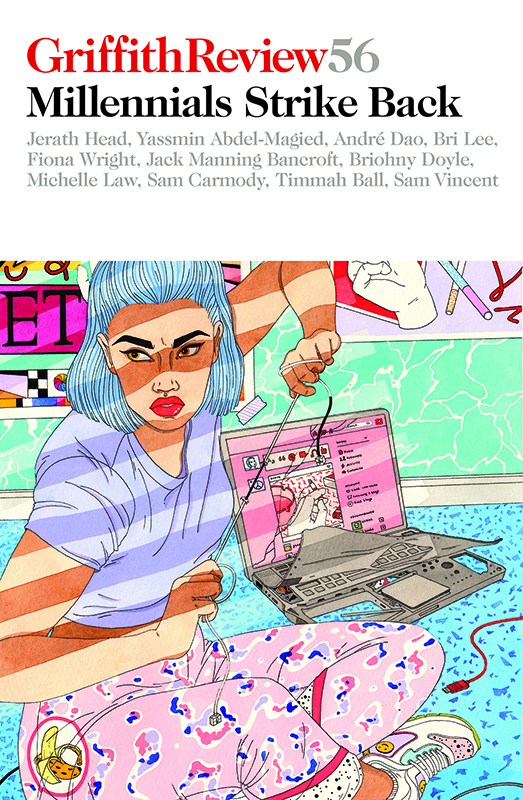
- Published 20170502
- ISBN: 9781925498356
- Extent: 264pp
- Paperback (234 x 153mm), eBook
I WAS THIRTEEN when I learnt a home’s real value.
The vice-principal called me into his office. He was the sort of teacher teenage boys fear: a former football player who wore a thick moustache on top of a ruddy face that continually looked like he was fighting the urge to burst into a rage. At first I thought I must have been in trouble. It was, however, worse than that. My mother was sitting in his office.
‘We’ll be fine,’ she said. Then she burst into tears. The vice-principal explained that our landlord had evicted us that morning.
The school arranged crisis accommodation with a group of nuns in Northcote. The nuns were warm and welcoming. That night my mother and I shared a room. It was clean, but the smell of years of accumulated anxiety hung in the air. I was embarrassed. I was ashamed. It was 1998 and we didn’t have a home.
I told no one. Not my father, which was pretty easy because he was absent. Not his family. Not my friends. No one. They all already knew my mother struggled – with money, with employment, with drinking; they didn’t get to know that we were homeless too. It was shameful enough being the poor kid in the wider family circle.
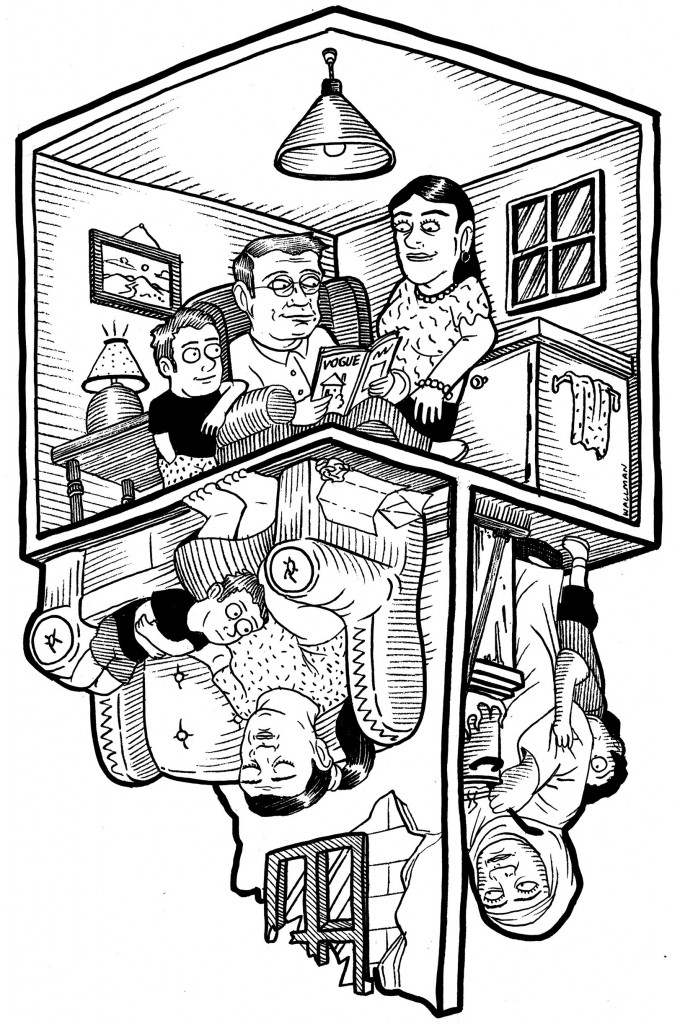 At the same time as we were homeless my paternal grandmother was making her living renting apartments in Hobart. Australia’s wealth divide ran through my family. My childhood was spent commuting between my father’s family and my mother’s place, shifting between the haves and the have-nots. In one place, the adults had Persian rugs, gin and tonics and talked of travel; in the other they had cask wine, cigarettes and crying.
At the same time as we were homeless my paternal grandmother was making her living renting apartments in Hobart. Australia’s wealth divide ran through my family. My childhood was spent commuting between my father’s family and my mother’s place, shifting between the haves and the have-nots. In one place, the adults had Persian rugs, gin and tonics and talked of travel; in the other they had cask wine, cigarettes and crying.
My early experience with the parallel realities of the social universe taught me that housing is not a realm of natural equilibrium tended by the market’s invisible hand. There are quirks, uneven distributions and random acts of catastrophe.
From my viewpoint, there are similarities between Australia’s housing market and a concept that seems to bear little resemblance to it: the black hole. A black hole is a point in space where the force of gravity is so strong that nothing escapes, not even light. In Australia, the upward rush of housing prices has been so rapid and significant that no aspect of daily life is free from its hold.
MY EXPERIENCE IS just one example of the many lives warped by the Australian housing black hole. More than two million Australians live with housing stress, meaning they have to work out which basic necessities to give up in order to make the rent or mortgage payment.[i] And every night, more than one hundred thousand Australians go to sleep without a home,[ii] hundreds of whom sleep rough within the central business districts of our major cities.[iii] Homelessness and housing stress have risen considerably over the last ten years,[iv] but in a parallel Australia we have never been richer. As property values have increased, household wealth has more than tripled over the last fifteen years and reached over $8 trillion in 2015.[v] How is it that we can accept these apparently contradictory realities as a normal part of our existence?
Depending on how we measure and observe it, light appears to take the form of a wave or a particle. The same goes for housing in Australia: its properties shift before our eyes depending on whether we are examining the basic need for shelter or measuring total wealth. Similar to light possessing a wave/particle duality, housing also has a needs/investment duality. Prosperity and poverty sit side by side as two contradictory accounts of reality – abstract concepts fading in and out of view depending on who’s looking.
These conflicting realities are often explained as being the result of an objective moral order. Housing becomes the site of a secular heaven and hell, with household wealth providing the measure of our moral worth. Some of us are winning and some of us are losing, but all of us are getting what we deserve. And not all of us deserve to eat smashed avocados in inner-city cafés.[vi]
Former Treasurer Joe Hockey exemplified this attitude when he advised people wanting to buy a home to ‘get a good job that pays good money’[vii] – as if housing wasn’t a human need so much as a reward for those who have earned it. A good home is fashioned with pearly gates, and homelessness becomes a form of moral punishment. However, the facts demonstrate how specious this reasoning is. According to Hanover Welfare Services, 40 per cent of those experiencing homelessness in Australia are in some form of work, usually insecure and casual jobs.[viii] Homelessness and housing stress cannot be reduced to a punishment for the sin of idleness. Today, Australian median housing prices have reached five and a half times the median annual household income, with Sydney and Melbourne having a ratio of house prices to income of 12.2 and 9.5 respectively.[ix] While these figures should not simply be accepted at face value,[x] they reveal a contemporary reality that is undeniable. There is a clear gap between hard work and the reward of housing, caused by a decoupling of prices from the capacity of many of us to pay them.
In 2015, the Victorian government received hundreds of individual submissions for its Inquiry into the Labour Hire Industry and Insecure Work.[xi] Many were first-hand accounts of workers attempting to manage their housing needs on fluctuating incomes. One anonymous submitter, a researcher who moved overseas in search of secure employment, wrote: ‘I was always behind with paying bills and didn’t know if I would be able to keep my home. I was highly stressed.’ A second anonymous submitter worried about becoming homeless if she got sick, and went on to write that she was travelling upwards of four hours per day for work and struggling to save money for fuel in between juggling other creditors. Another submitter, Neil, described how he ‘[w]ent behind with house payments in the “quiet time” at work’.
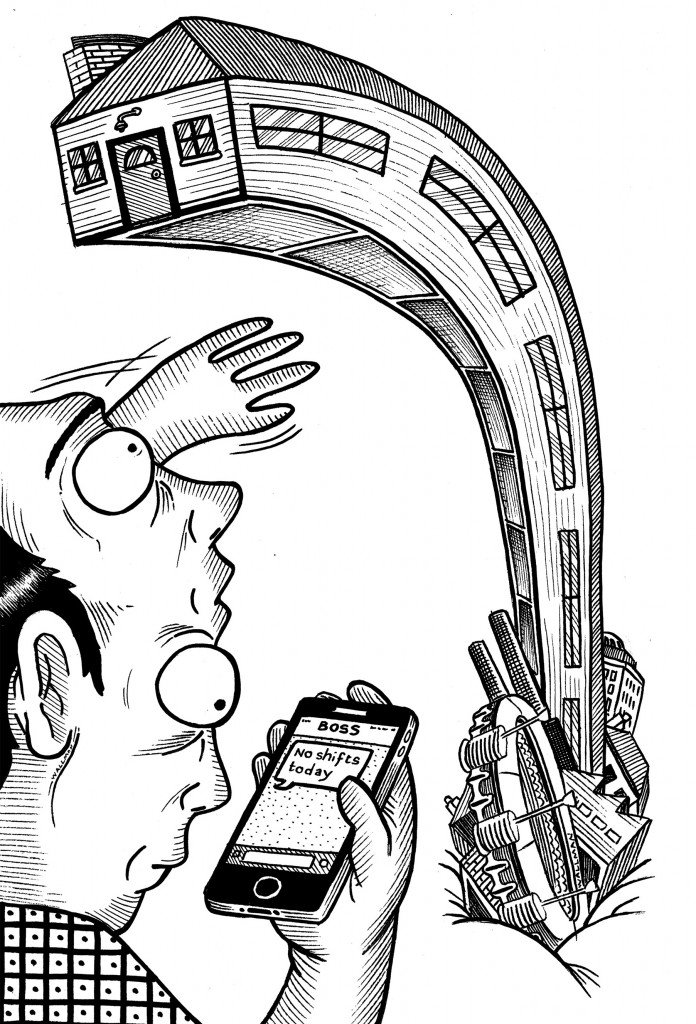 In a study last year, global credit-rating agency Fitch Ratings identified underemployment as a driver of rising Australian mortgage arrears despite falling interest rates and low unemployment, finding that ‘[t]he worsening arrears may be due to high underemployment’.[xii]
In a study last year, global credit-rating agency Fitch Ratings identified underemployment as a driver of rising Australian mortgage arrears despite falling interest rates and low unemployment, finding that ‘[t]he worsening arrears may be due to high underemployment’.[xii]
Housing’s quantum reality means that for every nine adult Australians going about their lives, many of whom wake up not knowing whether they will get a shift at work or if they will be able to pay for their home, there may be one investing in multiple properties.[xiii]
In the 2016 federal election campaign, Labor and the Greens’ response to this reality was to propose changes to taxation policies (such as negative gearing and the capital gains tax discount) that help fuel housing prices beyond any imaginable income increases. The Coalition’s response was to increase the intensity with which they promoted the myth that one’s ability to afford housing depends on a willingness to work hard and adopt prudent financial habits. In February 2016, Prime Minister Malcolm Turnbull warned that changes to negative gearing for existing homeowners ‘will make your home worth less.’[xiv] The Coalition then took to blaming the predicament of those wishing to buy a home on the sins of their parents. In May 2016, Turnbull suggested that radio host Jon Faine should ‘shell out’ for his children to buy a house, the implication being that prospective homebuyers should be punished or rewarded based on their parents’ behaviour.
More recently, repeated poor polling appears to have shaken some Coalition members’ faith in the objective moral order of the housing market.[xv] In the quiet days of January 2017, Turnbull dispatched Treasurer Scott Morrison to London on a housing affordability mission and appointed Michael Sukkar as Assistant Minister to the Treasurer with responsibility for tackling the issue.
Australian housing is exhibiting quantum-like behaviour with its needs/investment duality and parallel but intersecting realities, as if a social force, akin to gravity, is compacting our need for shelter into such a small space within our society that it now operates on the quantum level. It could perhaps be that the value of Australian housing has grown so large that is has collapsed into a black hole – and we’re all being sucked into the consequences.
A KEY FEATURE of a black hole is the gravitational singularity: the point at which matter becomes infinitely dense. This means more and more matter occupies an area of space. An equivalent event appears to be occurring in the Australian housing market, where land grows seemingly infinite in market value, losing touch with any comprehensible meaning for ordinary Australians. In other words, the exponentially increasing housing values mean that owning a home is verging on infinitely unattainable. But this was not always the case.
After the 1880s housing boom and crash, Australian housing prices were relatively stable until the 1950s and the median price of housing essentially followed one year’s worth of median household income.[xvi] However, after seventy years, things changed. In the early 1950s, the cost of housing started its long journey upwards; over twenty years, the ratio of property value to household income crept from a baseline 1:1 to a little under 1:2. Then, in the 1970s, house prices began increasing at a rate of 3 per cent each year in real terms while real wages remained constant.[xvii] This meant that from the 1970s to the 1990s, median house values rose from less than twice the median annual household income to more than triple it[xviii] – in one generation, the time it took to earn enough money to buy a house almost doubled.
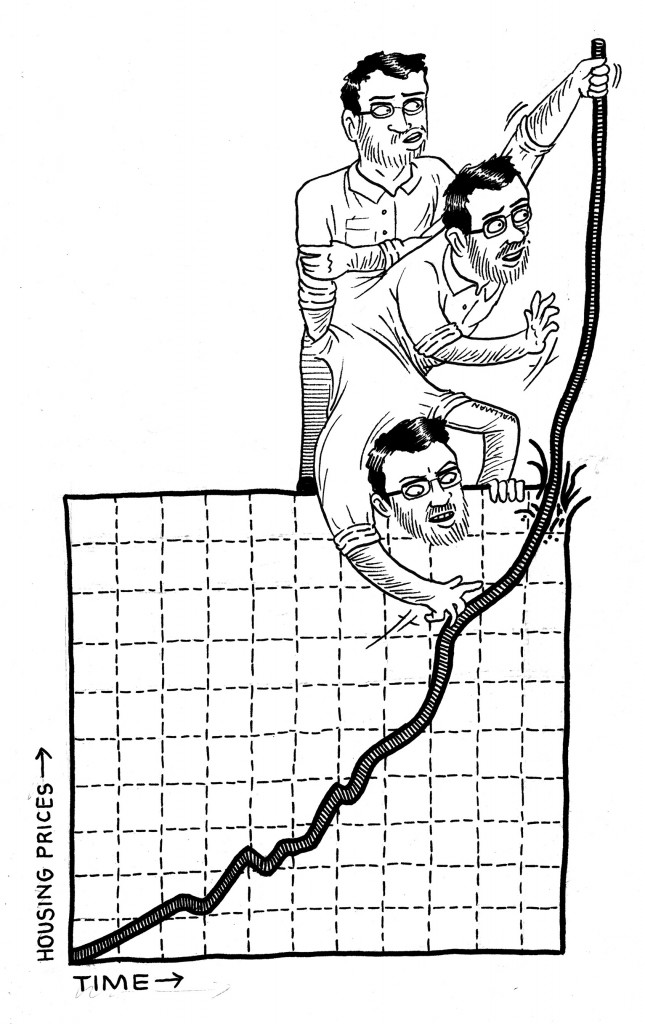 The 1990s saw the imbalance between median incomes and housing values increase further; since then, housing values have continued to grow at an average of 6 per cent annually, aside from a brief interruption during the 2007–08 global financial crisis.[xix] Ominously, the gap between incomes and housing values continues to widen: wage growth remained stagnant in 2016, whereas combined capital-city housing values increased by 10.9 per cent.[xx]
The 1990s saw the imbalance between median incomes and housing values increase further; since then, housing values have continued to grow at an average of 6 per cent annually, aside from a brief interruption during the 2007–08 global financial crisis.[xix] Ominously, the gap between incomes and housing values continues to widen: wage growth remained stagnant in 2016, whereas combined capital-city housing values increased by 10.9 per cent.[xx]
Since the 1950s, then, the ratio between housing values and income has roughly doubled every twenty years, and Australian housing values mapped over time on a graph would depict exponential growth.[xxi]
At some point, an exponential function takes on an infinite value. When such a function is expressed over time, the future is eventually suspended: time appears to stop, seems to progress no further as existence becomes warped by the violent upward rush. This is the singularity of the housing black hole. As Australians go about living their lives and planning for the future, the most consistent focal point is the affordability and accessibility of shelter, whether renting, buying or completely lacking – and we exist today on approach to this point of singularity, of housing stretching away beyond our reach.
THE BOUNDARY OF a black hole is what’s known as the ‘event horizon’ – the point on approach from which there is no coming back. It is the last possible place to view space and time swirling around the black hole’s limits. Time is different at the event horizon. It appears to run both backwards and forwards – past, present and future collide.
If the immense value of housing has collapsed into a black hole then we should find evidence for its existence in the warping of our daily lives, the distortion of public life and the conversion of our economic energy into the further expansion of housing values. While correlation is not necessarily causation, given the housing black hole is not itself visible we must look for observable social phenomena around us that point to its existence.
From the perspective of an outside observer, objects approaching the event horizon appear to slow down. Similarly, a temporal shift seems to be occurring in the lives caught within the housing black hole. Over the last decade, the average age of first home buyers nationally has risen by three years, from 34.7 to 37.7.[xxii] With housing values going up relative to income, it takes longer for Australians to save up a deposit.
This is trend has been accompanied by a decrease in the total number of first-home buyers: 11,626 in November 2006 compared to 8,281 in November 2016.[xxiii] In the same period, first-home buyers have shrunk from 17.4 per cent of all owner-occupier financial commitments down to 13.8 per cent – this in the context of overall levels owner-occupier housing losing ground to investors as a total proportion of housing finance.[xxiv]
Other traditional milestones of adult life are also occurring later. The median age of first marriages between 1990 and 2015 shifted up from 26.5 to 30.1 years for men, and from 24.3 to 28.5 years for women.[xxv] Furthermore, the median age of all mothers for births has gone up from 25.4 years in 1971 to 31 years in 2015.[xxvi] There is nothing inherently negative in these data trends; in fact, they may be reflective of other powerful movements towards greater social freedom and equality. However, the global financial crisis coincided not only with a brief respite to rising house prices but also a temporary halt to the increasing median age of parents at birth[xxvii] – further evidence of a relationship between the housing black hole and the age at which the social markers of adulthood are being reached.
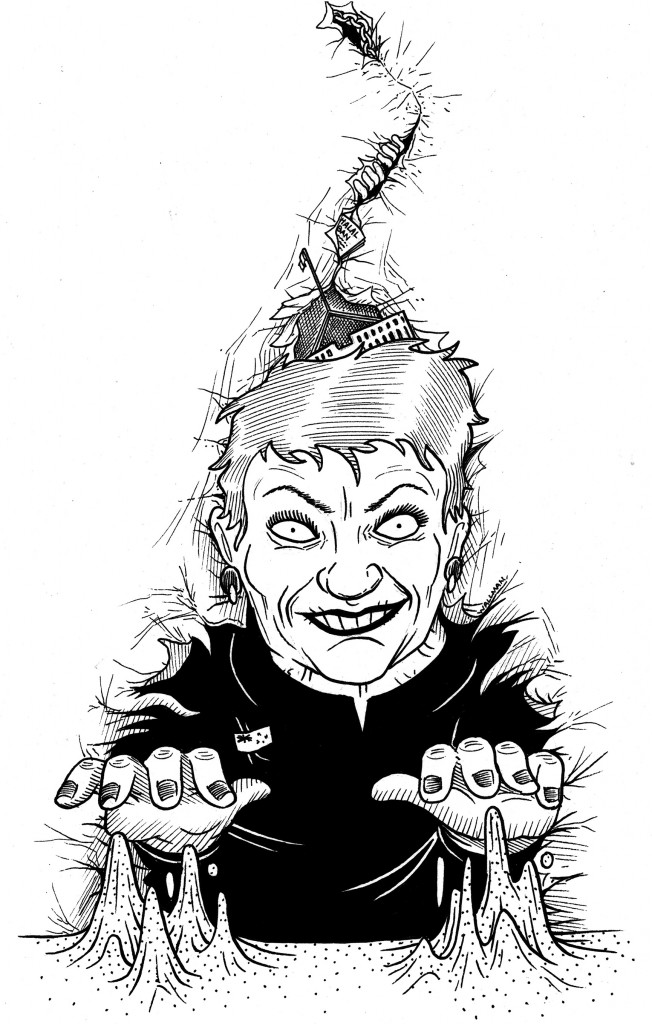 Furthermore, in Australian public life a strange repetition of the present appears to be occurring. It is becoming routine for prime ministers to be assassinated by their party rooms without serving a full term. Electoral landslides are followed by exhausted dead heats, which are followed by electoral landslides – and so on.
Furthermore, in Australian public life a strange repetition of the present appears to be occurring. It is becoming routine for prime ministers to be assassinated by their party rooms without serving a full term. Electoral landslides are followed by exhausted dead heats, which are followed by electoral landslides – and so on.
Pauline Hanson has resurrected her 1990s rhetoric. Her return, however, is beyond satire: she fixates on the threat of squat toilets in the Australian Taxation Office and warns that ‘it starts with toilets and ends up costing us our Australian way of life’[xxviii] – a sentiment that views the ‘Australian way of life’ as a time when everyone knew their place, and everyone was rewarded with a secure income and a place to live. It’s as if the event horizon has brought forth Hanson a second time to tell us of a past that never happened but will come again. Yet despite its apparent logical flaws, Hanson’s argument finds its place in the breakdown of common sense that accompanies the housing black hole, as a revisionist viewpoint that appeals to an idea of 1950s life, where the median house price was equivalent to one year’s median income.
ENERGY SURROUNDING A black hole is drawn into it and converted to its mass as it infinitely increases in density. Similarly, our productive energies feed the expansion of housing values. Since the late 1980s, the ratio of business credit to total credit has been in decline.[xxix] Capital that could have otherwise been allocated to productive activities now flows towards mortgages, and more specifically mortgages for the already existing housing stock.
We have all borne the opportunity cost. New enterprises and innovations in the way we work together have been postponed or lost (the now-empty Ford factories in Broadmeadows and Geelong will never produce electric cars). The jobs they would have nurtured never had a chance to exist, let alone the lives and more equitable communities that could have been built around them.
The housing black hole is also consuming our neighbourhoods. Take Melbourne, for instance. Each year, the Speculative Vacancies report measures the occupancy rate of Melbourne properties based on the water utilities’ publicly available usage data. A single slowly dripping tap can release fifty-five litres of water per day, so the report uses a 12 month average of less than fifty litres of water use per day as an objective indicator of a vacant property.[xxx] On this measure, 4.8% of Melbourne’s residential properties are speculative vacancies; in other words, they are sitting empty – unoccupied and not available on the market.[xxxi] They are investment vehicles determined by capital gains on the value of the property rather than on its use. These speculative vacancies are based on calculations that suggest the housing black hole will continue to grow. But in applying this maths, good homes are going to waste and people are struggling to see the light.
AFTER A WEEK of living with the nuns, my mother and I were lucky enough to find a new house to rent that was a couple of suburbs out from where I went to school. It was the eighth place we had lived in the first fourteen years of my life. I fear the outcome should we have faced the same situation now, almost twenty years later.
The housing black hole places great pressure on our lives and communities, stretching and distorting the social and economic fabric of peoples’ lives. But it is one thing to describe this reality and another to change it: the real challenge will be in figuring out how to free Australia from its grip.
The present cannot hold. We can’t remain in our present position on the event horizon because it isn’t fixed: the black hole’s gravitational vortex is destabilising Australian society. This leaves us with two options. Either we attempt to retreat backwards in time and space from the black hole or we leap through the event horizon and into the unknown future – a new society where we relate differently to each other and our land. It is the contest between these two potentials that divides Australia.
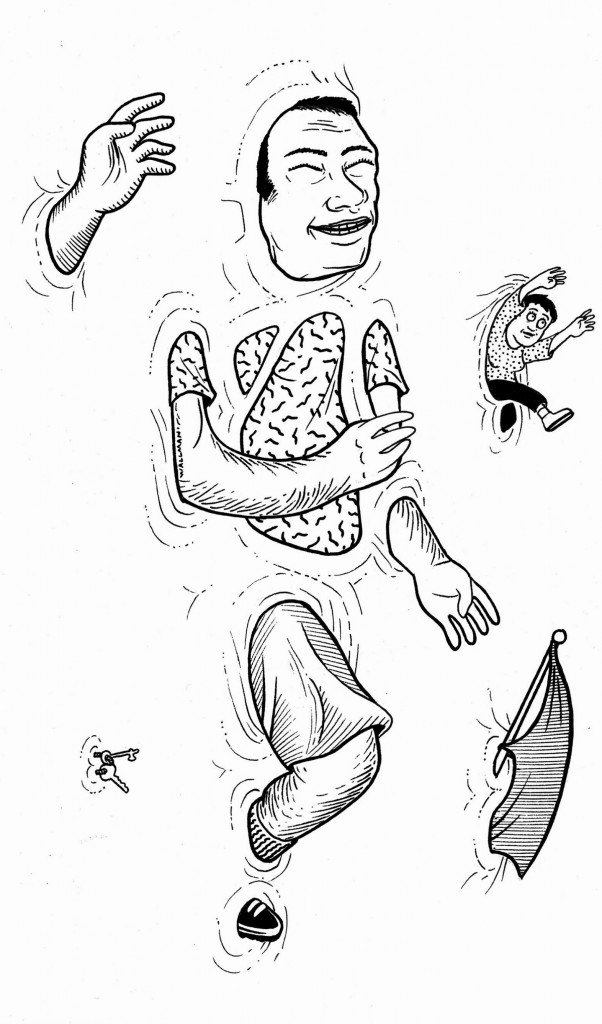
Illustrations by Sam Wallman © 2017. The full graphic essay of ‘The housing black hole’ appears only in the print edition of Griffith Review 56: Millennials Strike Back.
References
[i] ‘Housing Costs through the roof’, Australians for Affordable Housing, 24 October 2011. Available at: http://housingstressed.org.au/wp-content/uploads/2011/10/Housing-costs-through-the-roof-Final-Report.pdf
[ii] ‘Census of Population and Housing: Estimating homelessness, 2011’, Australian Bureau of Statistics, 12 November 2012. Available at: http://abs.gov.au/ausstats/abs@.nsf/Latestproducts/2049.0Main%20Features22011
[iii] Nicole Chettle, ‘Sydney homelessness survey suggests drop in number sleeping rough’, ABC News, 5 August 2016. Available at: http://www.abc.net.au/news/2016-08-05/sydney-homelessness-survey-suggests-drop-sleeping-rough/7693320
[iv] ‘Census of Population and Housing: Estimating homelessness, 2011’, Australian Bureau of Statistics, 12 November 2012. Available at: http://abs.gov.au/ausstats/abs@.nsf/Latestproducts/2049.0Main%20Features22011
[v] ‘Australia’, Global Wealth Report 2015, Credit Suisse, October 2015, 57. Available at https://publications.credit-suisse.com/tasks/render/file/?fileID=F2425415-DCA7-80B8-EAD989AF9341D47E
[vi] Bernard Salt, ‘Moralisers, we need you!’, The Weekend Australian, 15 October 2016. Available at: http://www.theaustralian.com.au/life/weekend-australian-magazine/moralisers-we-need-you/news-story/6bdb24f77572be68330bd306c14ee8a3
[vii] Latika Bourke, ‘Joe Hockey’s advice to first homebuyers – get a good job that pays good money’, The Sydney Morning Herald, 9 June 2015. Available at: http://www.smh.com.au/federal-politics/political-news/joe-hockeys-advice-to-first-homebuyers–get-a-good-job-that-pays-good-money-20150609-ghjqyw.html
[viii] ‘Insecure work creates vulnerability and increases inequality’, Victorian Council of Social Service, November 2015. Available at: http://vcoss.org.au/documents/2015/11/SUB_151127_Labour-Hire-and-Insecure-Work_Final.pdf
[ix] Wendell Cox, Hugh Pavletich & Oliver Hartwich, ‘13th Annual Demographia International Housing Affordability Survey: 2017’, Demographia, 24 January 2017. Available at: http://www.demographia.com/dhi.pdf
[x] Stephen Koukoulas, ‘Australia’s housing affordability is much more complex than the headlines’, The Guardian, 25 January 2017. Available at: https://www.theguardian.com/commentisfree/2017/jan/25/australias-housing-affordability-is-much-more-complex-than-the-headlines
[xi] ‘Submissions – Victorian inquiry into labour hire and insecure work’, Inquiry into the Labour Hire Industry and Insecure Work, 29 November 2016. Available at: http://economicdevelopment.vic.gov.au/inquiry-into-the-labour-hire-industry/submissions
[xii] Stephen Letts, ‘Underemployment driving up problem home loans: Fitch’, ABC News, 20 September 2016. Available at: http://www.abc.net.au/news/2016-09-20/underemployment-is-driving-up-problem-home-loans/7860710
[xiii] David Scutt, ‘Some facts about who uses negative gearing, from the RBA’ Business Insider, 16 February 2016. Available at: http://www.businessinsider.com.au/some-facts-about-who-uses-negative-gearing-from-the-rba-2016-2
[xiv] Phillip Hudson, ‘PM: Labor’s negative gearing changes would “smash housing market”’, The Australian, 19 February 2016. Available at: http://www.theaustralian.com.au/national-affairs/pm-labors-negative-gearing-changes-would-smash-housing-market/news-story/6c11cecdea4aead50686a7a725af545f
[xv] Chris Johnson, ‘Malcolm Turnbull seizes housing affordability as key to his comeback’, The New Daily, 23 January 2017. Available at: http://thenewdaily.com.au/news/national/2017/01/23/malcolm-turnbull-housing-affordability/
[xvi] Nigel Stapledon, ‘A History of Housing Prices in Australia 1880-2010’, Discussion Papers 2010-18, School of Economics, The University of New South Wales, November 2010. Available at: https://ideas.repec.org/p/swe/wpaper/2010-18.html
[xvii] Paul Frijters & Robert Gregory, ‘From Golden Age to Golden Age: Australia’s “Great Leap Forward”?’ Economic Record, 2006. Available at http://eprints.qut.edu.au/3626/1/3626.pdf
[xviii] Stapeldon, ‘A History of Housing Prices in Australia 1880-2010’, 26.
[xix] ‘Residential Property Price Indexes: Eight Capital Cities, Dec 2016’, Australian Bureau of Statistics, December 2016. Available at: http://www.abs.gov.au/ausstats/abs@.nsf/mf/6416.0
[xx] Tim Lawless, ‘Capital city dwelling values surge 10.9% higher over the 2016 calendar year’, Core Logic, 3 January 2017. Available at: https://www.corelogic.com.au/news/capital-city-dwelling-values-surge-10-9-higher-over-the-2016-calendar-year
[xxi] ‘Global house prices’, The Economist, 31 March 2016. Available at: http://www.economist.com/blogs/dailychart/2011/11/global-house-prices
[xxii] Michelle Hele, ‘The average age of home buyers has increased in most capital cities in Australia’, News.com.au, 30 October 2015. Available at: http://www.news.com.au/finance/real-estate/buying/the-average-age-of-home-buyers-has-increased-in-most-capital-cities/news-story/7a88034ae4f273382bc748216669c14b
[xxiii] ‘Housing Finance, Australia, November 2016’, Australian Bureau of Statistics, November 2016. Available at: http://abs.gov.au/AUSSTATS/abs@.nsf/Lookup/5609.0Main+Features1November%202016?OpenDocument
[xxiv] Greg Jericho, ‘Housing finance data: here’s a heads up on where the market is heading’, The Guardian, 19 January 2017. Available at: https://www.theguardian.com/commentisfree/2017/jan/19/housing-finance-data-heres-a-heads-up-on-where-the-market-is-heading
[xxv] ‘Marriages and Divorces, Australia, 2015’, Australian Bureau of Statistics, 30 November 2016. Available at: http://www.abs.gov.au/ausstats/abs@.nsf/mf/3310.0
[xxvi] ‘Births, Australia, 2015’, Australian Bureau of Statistics, 11 August 2016. Available at: http://www.abs.gov.au/ausstats/abs@.nsf/mf/3301.0
[xxvii] Ibid.
[xxviii] Waleed Aly, ‘Pauline Hanson: Just a case of right place, right time’, The Sydney Morning Herald, 18 August 2016. Available at: http://www.smh.com.au/comment/pauline-hanson-just-a-case-of-right-place-right-time-20160817-gqv6hm.html
[xxix] Catherine Cashmore, Speculative Vacancies 8: the empty properties ignored by statistics, Prosper Australia, 2015, 8.
[xxx] Ibid, 5.
[xxxi] Ibid.
Share article
About the author

Godfrey Moase
Godfrey Moase is Assistant General Branch Secretary at the National Union of Workers. He's previously written for the Guardian, Overland, Jacobin, and New Matilda....
More from this edition

Measuring imperfection
Essay IN RETROSPECT, IT was always a stupid idea to buy a Fitbit; I’m still not entirely sure why I did it. Some of my...

Off the plan
ReportageIT’S EARLY 2017, and the first lists of the most unaffordable housing in the world have dropped. Oh boy. I’ve been waiting for this...
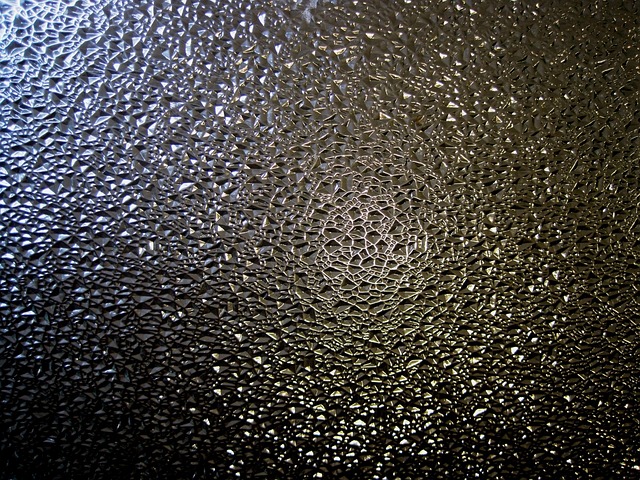
Still talkin’ up to the white woman
MemoirTHE NAKED WOMAN is only visible when my manager’s door is open – when closed it is unclear what the painting depicts. From my desk...